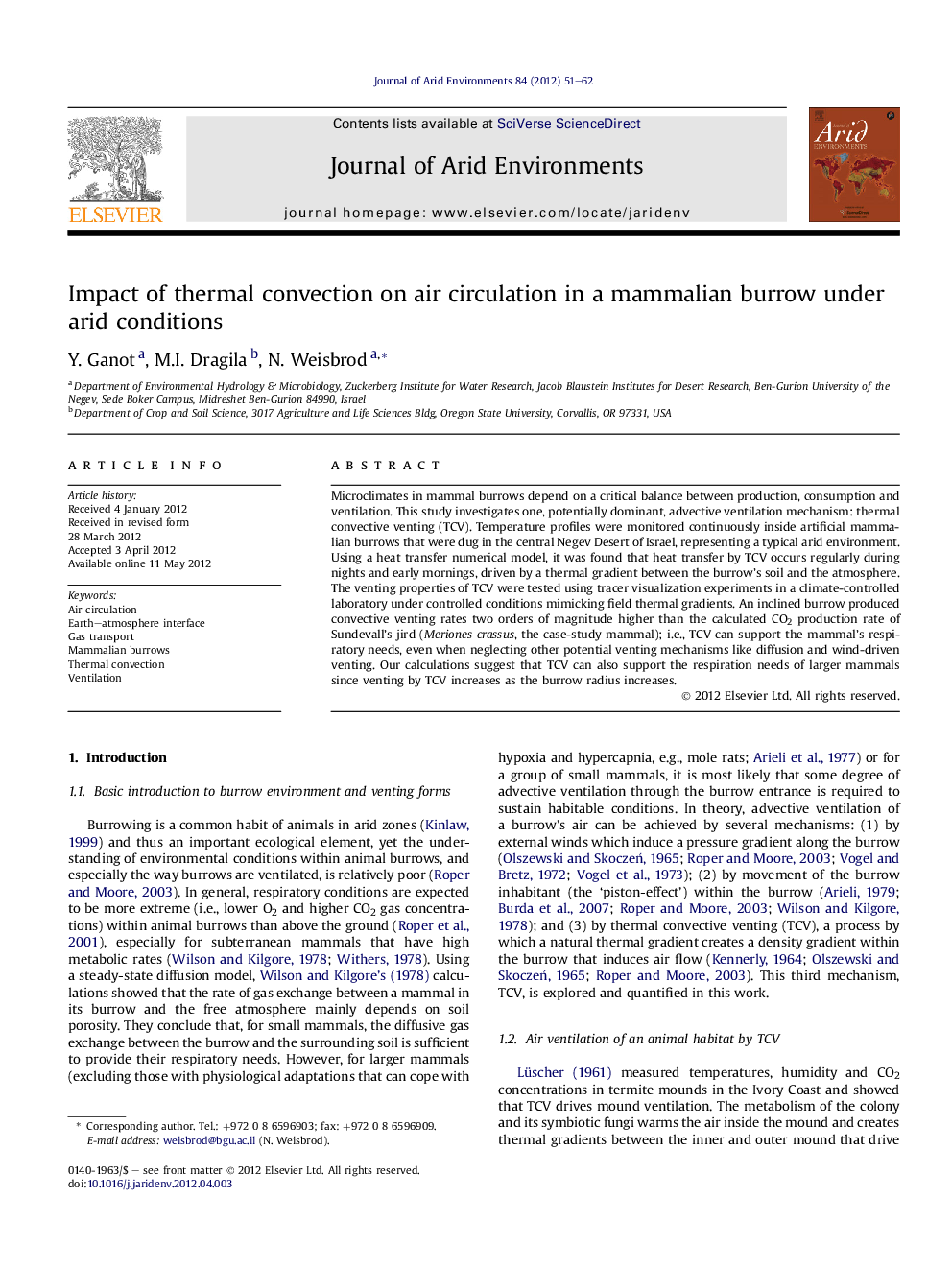| Article ID | Journal | Published Year | Pages | File Type |
|---|---|---|---|---|
| 4393261 | Journal of Arid Environments | 2012 | 12 Pages |
Microclimates in mammal burrows depend on a critical balance between production, consumption and ventilation. This study investigates one, potentially dominant, advective ventilation mechanism: thermal convective venting (TCV). Temperature profiles were monitored continuously inside artificial mammalian burrows that were dug in the central Negev Desert of Israel, representing a typical arid environment. Using a heat transfer numerical model, it was found that heat transfer by TCV occurs regularly during nights and early mornings, driven by a thermal gradient between the burrow's soil and the atmosphere. The venting properties of TCV were tested using tracer visualization experiments in a climate-controlled laboratory under controlled conditions mimicking field thermal gradients. An inclined burrow produced convective venting rates two orders of magnitude higher than the calculated CO2 production rate of Sundevall's jird (Meriones crassus, the case-study mammal); i.e., TCV can support the mammal's respiratory needs, even when neglecting other potential venting mechanisms like diffusion and wind-driven venting. Our calculations suggest that TCV can also support the respiration needs of larger mammals since venting by TCV increases as the burrow radius increases.
► Thermal convection (TCV) was measured in artificial burrows. ► TCV occurs regularly in burrows in the Negev Desert. ► Laboratory quantification show that TCV results in enhanced ventilation. ► TCV ventilation rates result in atmospheric conditions within burrows.
